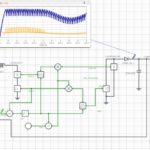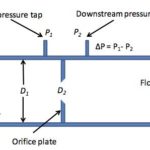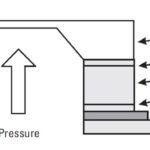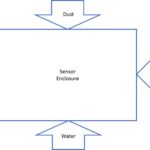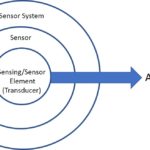One of the more common techniques for accelerating designs and avoiding unexpected design problems involves software tools. For energy harvesting (EH) applications, Mentor Graphics on-line modeling and simulation platform called SystemVision, a cloud-based design system, provides component/system suppliers and users the basis for a new EH design tool. Since many designers are intrigued by the […]
Frequently Asked Question (FAQ)
How do you calculate flow from a pressure measurement?
A variety of techniques are used to measure flow, including the Coriolis Effect, mass air flow, vortex, magnetic, thermal, ultrasonic, turbine, and positive displacement meters as well as pressure sensors. With the high volume, low cost, and reliability of microelectromechanical system (MEMS) pressure sensors, these products are a frequent choice for measuring both liquid and […]
How can you detect a wrong way driver?
In broad daylight and with several oncoming vehicles, the Do Not Enter and Wrong Way signs seem like they are unnecessary. However, late at night with no oncoming traffic and especially with an impaired driver, the Wrong Way sign is not enough to stop a wrong way driver (WWD). It turns out that in the […]
What are common ways to protect a sensor from harmful exposure?
For a sensor, the amount of harmful exposure it receives from the environment and harmful constituents in the measuring process depends on what is being sensed and the environment itself. Different packaging is required to cope with and survive the specific situation. Two major considerations for protection are at the sensing element/transducer level or at […]
How do you know when an IP69K package is required for a sensor?
To answer this question, you first need to know what an IP69K package is. The (IEC) developed its IEC 60529 rating system to define different degrees of protection (i.e., ingress protection (IP)) for enclosures. The most recent version is IEC 60529:1989+AMD1:1999+AMD2:2013 CSV, Consolidated version, Degrees of protection provided by enclosures (IP Code). It costs hundreds […]
How fast is that thing going?
The need for speed implies the requirement for speed sensing. Speed sensors provide the input and feedback data to monitor and control motors and other rate sensitive linear and rotary applications. For example, the throughput of automated high-speed production lines depends on many parameters but the line speed is an early indication of expected versus […]
What is a transducer and how are sensors different?
The terms sensor and transducer are frequently used interchangeably, however, there are differences. Going strictly by definition, a transducer is a device that translates primarily nonelectrical quantities into electric signals [1]. Instrument engineers limit the definition to a device used for measurement purposes. In this context, transducers can be used for measuring mechanical, thermal acoustic, […]
How can you get more than one measurement from a single sensing technology?
Getting more than one sensor measurement from a semiconductor sensor package that is perhaps 50% or more smaller than one commonly used a decade ago is no problem. Two and even all three of the accelerometer, gyroscope and magnetometer (AGM) sensors found in an inertial measurement unit (IMU) commonly found in a smart phone are […]
What’s the color of this thing?
When color is a critical part of the process control, it makes sense to avoid human operator detection and rely on a sensor and computing systems to perform the measurement. While the growth will be in the single digits, a recent report projects that the global color detection sensor market will reach $3.01 billion by […]
What’s the temperature of this thing?
Of course, there are many follow-up questions regarding where or when such as: on just the surface, in the center, on average, instantaneously, or steady state, to name a few. The standard temperature measurement technique that many people first encountered was the mercury (Hg) thermometer to determine if they had a 98.6° or higher temperature. […]

